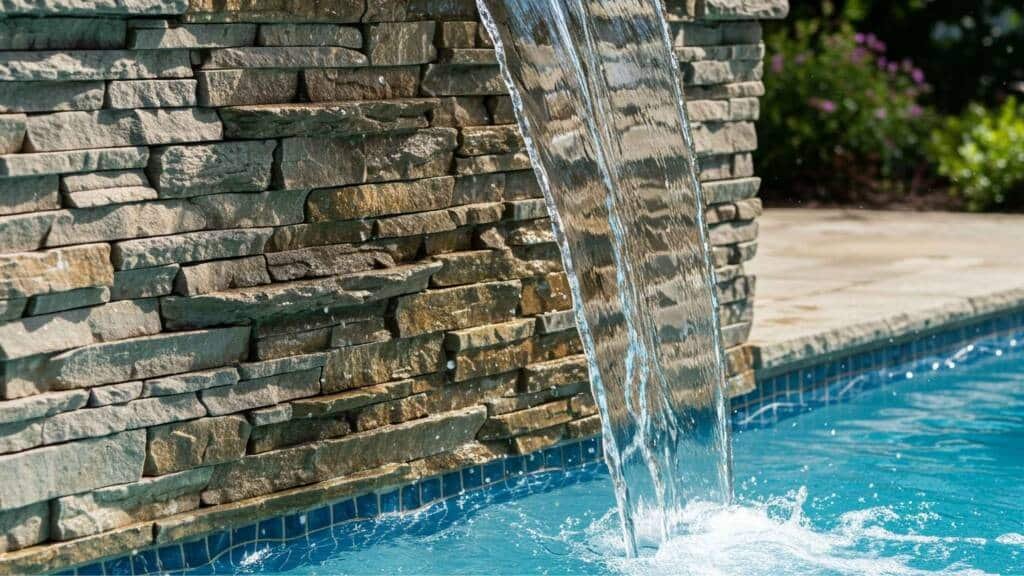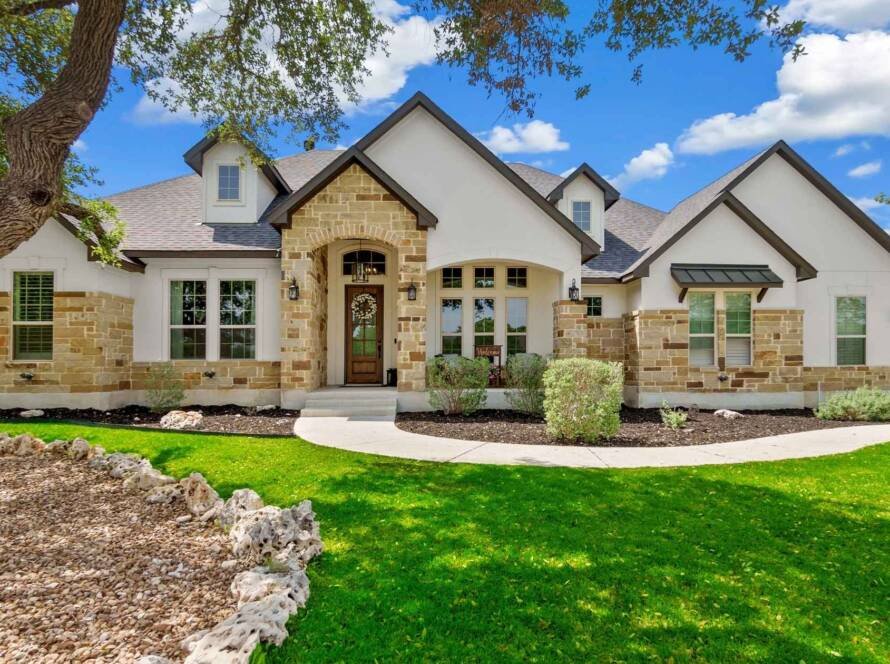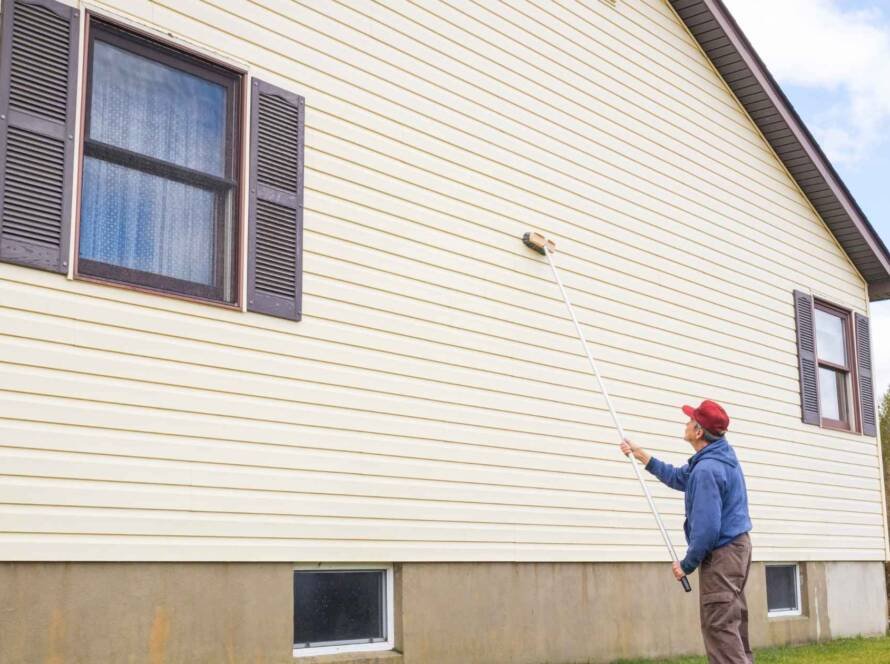Introduction
Transforming a sloped yard into a beautiful and functional poolside oasis can seem daunting. However, with the right design and materials, a pool retaining wall can not only stabilize the landscape but also enhance the overall aesthetic. A pool retaining wall is a powerful solution to prevent erosion, manage water flow, and create usable space for landscaping. In this article, we will explore why pool retaining walls are essential for sloped yards, cover the costs associated with them, examine the best materials to use, and discuss the installation and maintenance process. Whether you’re planning to install a new pool or upgrade an existing one, this guide will help you make informed decisions that ensure both safety and beauty.
At America’s General Contracting, we specialize in designing and installing custom pool retaining walls that are tailored to the unique needs of homeowners in Dallas. Let’s dive into the world of pool retaining walls for sloped yards!
Table of Contents
Section 1: Why You Need Pool Retaining Walls for Sloped Yards
Sloped yards present unique challenges when it comes to pool installation and maintenance. Without a retaining wall, the natural slope can cause soil erosion, uneven pool placement, and poor drainage, which can lead to serious long-term issues.
1.1 Stabilize the Slope
A pool retaining wall serves as a barrier that prevents soil from eroding and shifting, thus stabilizing the slope of your yard. Without proper stabilization, the ground around your pool can settle unevenly, affecting the pool’s structure.
1.2 Prevent Water Drainage Issues
Sloped yards often lead to water drainage problems. Rainwater tends to run off the slope, pooling around your pool area, which can lead to flooding. A well-designed retaining wall directs water away from the pool, keeping your pool area dry and safe.
1.3 Maximize Use of Space
Retaining walls not only help in managing drainage and soil erosion, but they also create terraced levels in your sloped yard. This additional space can be used for landscaping, planting, outdoor seating, or even adding features like fountains and waterfalls around the pool.

Section 2: Cost of Pool Retaining Walls for Sloped Yards
The cost of building a pool retaining wall can vary significantly depending on several factors, including the size of the wall, the materials used, and the complexity of the installation process.
2.1 Factors Affecting Cost
- Wall Size: The height and length of the retaining wall significantly impact the price. Taller walls or longer sections require more materials and labor.
- Materials Used: Different materials come with different price tags. Stone and brick, for example, are more expensive than concrete or timber.
- Labor Costs: Installing a retaining wall on a sloped yard is labor-intensive and requires skilled professionals, which can increase the overall cost.
- Location and Accessibility: If your yard is difficult to access, the cost of delivery and labor may rise.
2.2 Average Costs
In Dallas, the cost for pool retaining walls typically ranges from $20 to $40 per square foot, depending on the materials and the project’s complexity. For a more detailed estimate, the cost can increase to around $50 per square foot for premium materials like stone or brick.
2.3 Long-Term Investment
While the initial cost of installing a pool retaining wall might seem high, it’s important to consider it as a long-term investment. A properly installed retaining wall prevents costly water damage, erosion, and the potential need for costly repairs to your pool and landscape in the future.
Section 3: Best Materials for Pool Retaining Walls
Choosing the right material for your pool retaining wall is essential to ensure its durability, aesthetic appeal, and functionality. Here are the most popular materials used for pool retaining walls:
3.1 Stone
Natural stone, such as granite, limestone, or sandstone, is a highly durable and aesthetically pleasing option for retaining walls. Stone walls offer a timeless, rustic look that complements many poolside landscapes.
3.2 Concrete
Concrete retaining walls are versatile, cost-effective, and easy to shape into various forms. Concrete can be poured or molded to create custom designs and textures, making it a popular choice for pool areas.
3.3 Timber
Timber is a more affordable option that can give your pool area a natural, rustic appearance. While timber is less durable than stone or concrete, it is a viable choice for smaller projects or those on a budget.
3.4 Brick
Brick is another classic material that adds elegance and charm to your pool area. Though it’s more expensive than concrete or timber, brick’s durability and visual appeal can make it worth the investment.
3.5 Poured Concrete
Poured concrete is ideal for larger projects, as it provides flexibility in design and offers unmatched strength and stability. It’s particularly useful for larger, tiered retaining walls.
Sub-Points:
- Discuss the pros and cons of each material.
- Recommend materials based on specific pool designs, yard aesthetics, and climate conditions in Dallas.

Section 4: Design Options for Pool Retaining Walls
The design of your pool retaining wall will not only impact its functionality but also its overall aesthetic appeal. Consider the following design options:
4.1 Height and Structure
The height of the wall can vary based on the slope of your yard and the design of your pool. For moderate slopes, a low retaining wall may suffice, while steeper slopes may require tiered or multi-level walls to manage the land effectively.
4.2 Incorporating Landscaping
Integrating your retaining wall with landscaping elements can enhance the visual appeal of your pool area. Consider adding built-in planters, seating, or accent lighting to create a more dynamic and functional space.
4.3 Safety Features
Safety should always be a priority, especially around the pool. Reinforcing the retaining wall and adding a safety barrier can help prevent accidents. Ensure that the materials used are durable enough to withstand any water pressure.
4.4 Aesthetic Considerations
Choose a design that complements your pool’s style. For example, modern pools might benefit from sleek concrete walls, while rustic, natural stone walls can give a Mediterranean feel.
Sub-Points:
- Ideas for integrating the retaining wall into pool decking or patio designs.
- How to blend the retaining wall design with your overall landscape.
Section 5: Installation Process for Pool Retaining Walls
Installing a pool retaining wall requires careful planning and execution. Here’s a step-by-step guide to the process:
5.1 Site Preparation
Start by assessing the yard’s slope, soil conditions, and drainage needs. Proper grading and drainage must be in place before any construction begins.
5.2 Building the Wall
Once the site is prepared, the process includes excavating the area, installing a foundation or footer, and then assembling the wall using the chosen materials.
5.3 Waterproofing
After the wall is built, waterproofing is essential to prevent water damage. Applying a sealing agent ensures the wall lasts longer and performs effectively.
5.4 Poolside Considerations
Consider the proximity of the pool and how the retaining wall will affect pool access. Ensure there is adequate space for pool equipment and that the design complements the overall pool layout.
List:
- Assess yard and pool site for slope and drainage issues.
- Excavate the area and prepare the foundation.
- Build the wall with chosen materials.
- Apply waterproofing and sealing.
- Final inspection to ensure safety and stability.

Section 6: Maintenance Tips for Pool Retaining Walls
Proper maintenance is essential to keep your pool retaining wall looking great and functioning well for years to come.
6.1 Regular Inspections
Check your retaining wall periodically for signs of erosion, cracks, or shifting. Early detection of problems can prevent more costly repairs later.
6.2 Cleaning
Keep the retaining wall clean by removing debris and dirt that can accumulate over time. This will help prevent water buildup and potential damage.
6.3 Reinforcement
If the wall begins to show signs of wear, reinforcement may be necessary to restore its strength and integrity.
6.4 Preventing Water Damage
Ensure that your drainage systems are functioning properly to avoid water pooling behind the wall, which can lead to structural damage.
Frequently Asked Questions (FAQs)
1. Can you build a pool next to a retaining wall?
Yes, it’s possible to build a pool next to a retaining wall, but careful planning and installation are essential. The retaining wall should be properly designed to support the weight of the pool and manage water drainage effectively. It’s important to ensure that the pool’s structure doesn’t interfere with the wall’s stability. Consulting with a professional like America’s General Contracting can help ensure the wall and pool are properly integrated for long-term safety and functionality.
2. Do I need a retaining wall for my pool?
If your pool is located in a sloped yard or near a hillside, a retaining wall is often necessary. It helps to stabilize the slope, prevent soil erosion, and manage water drainage around the pool. A retaining wall also creates more usable space in your yard and enhances the overall look of the pool area. If your yard is flat and there are no significant drainage issues, a retaining wall may not be required, but it can still improve the pool’s aesthetic appeal.
3. How close can a pool be to a retaining wall?
The distance between your pool and a retaining wall depends on local regulations and the pool’s design. Generally, it’s recommended to maintain at least a few feet of clearance between the pool and retaining wall to ensure proper drainage, access for maintenance, and prevent potential structural issues. It’s always best to consult with a professional contractor to ensure compliance with local building codes and safe distances.
4. How much is a retaining wall for a pool?
The cost of a pool retaining wall can vary based on factors such as the materials used, the size of the wall, and the complexity of the installation. On average, you can expect to pay between $20 to $40 per square foot for retaining walls in Dallas, with higher-end materials like stone or brick pushing the price toward the upper end of the range. For a more accurate estimate, consider contacting America’s General Contracting for a detailed quote based on your specific project.
5. How to build a pool retaining wall?
Building a pool retaining wall involves several key steps:
- Site Preparation: Assess the slope, soil conditions, and drainage needs. Proper grading is essential.
- Foundation: Dig a trench and pour a concrete base to ensure the wall has a strong foundation.
- Wall Construction: Install the retaining wall using your chosen materials, such as stone, brick, or concrete. Make sure the wall is level and properly aligned.
- Waterproofing: Apply a waterproof sealant to prevent water damage behind the wall.
- Drainage: Install drainage pipes and weep holes to ensure water flows away from the pool area and doesn’t build up behind the wall.
- Final Inspection: After installation, check for stability, proper drainage, and alignment.
For a professionally built pool retaining wall, contact America’s General Contracting for expert design and installation services.
Section 7: How America’s General Contracting Can Help with Your Pool Retaining Wall Project
With years of experience in designing and installing pool retaining walls, America’s General Contracting offers expert services that ensure the safety, durability, and beauty of your pool area.
7.1 Expert Design
We specialize in creating custom designs that fit the unique requirements of your sloped yard and pool area.
7.2 Professional Installation
Our skilled team ensures your pool retaining wall is installed to the highest standards, with attention to detail and quality.
7.3 Local Expertise
As Dallas locals, we understand the climate, soil types, and drainage needs specific to the area, providing solutions tailored to your property.
Ready to start your pool retaining wall project? Contact America’s General Contracting today for a free consultation!
Conclusion
A pool retaining wall is not just a functional element of your pool area—it’s a key feature that enhances safety, prevents erosion, and creates beautiful landscaping possibilities. Whether you’re building a new wall or upgrading an existing one, understanding the costs, materials, design options, and maintenance requirements will help you make informed decisions.
Final Call to Action: For expert pool retaining wall services in Dallas, get in touch with America’s General Contracting today. Let us help you create a stunning, safe, and durable pool area!



